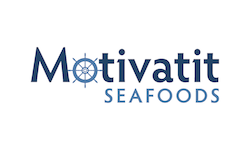
Sustainability of Oysters
Our family harvests oysters in the nutrient-rich waters along the Louisiana coast. The Mississippi River provides a continual flow of fresh water, the Gulf of Mexico provides the salt water with the winds and currents mixing the waters together creating a perfect environment for the reproduction and survival of our oysters. During the harvest operation, our boats turn in a circular pattern over the oyster reefs pulling scrapers which are winched onto the deck and dumped onto tables. Oysters 3″ and larger, are harvested and the smaller oysters along with any shells are returned to the reef. Oysters are essential to the ecology of the Gulf. The reefs protect areas of soft marshland from eroding and offer safe havens for other forms of marine life.
The oyster producing areas have a rich heritage in Louisiana. The Louisiana Department of Wildlife and Fisheries and the Louisiana Department of Natural Resources keep watch over approximately 2,000,000 acres of state-owned water bottoms and take measures to allow the oysters to regenerate. In 1988, an Oyster Task Force, comprising of the Louisiana Department of Wildlife and Fisheries enforcement, biologists, administrative and research personnel, Louisiana Department of Natural Resources personnel, and oyster industry participants to represent the Louisiana oyster industry at the state and federal levels. The task force supports non-intrusive projects such as barrier restoration, marsh fortification, and controlled river diversions that maintain the unique mix of fresh and salt water so necessary for the oysters to thrive.
By supporting the oyster task force, Motivatit is dedicated to ensuring that Louisiana oysters remain a precious natural resource for all to enjoy for many generations to come.
The Christmas Oyster
This information has been put together to explain the reason oysters turn a pinkish/redish color on rare instances during the year. This effect is commonly known as the “Christmas Oyster.” Oysters are filter feeders capturing plankton passing through the water column. At times they are exposed to a diet of natural algae which changes its liquids color during the digestive process. The oyster is perfectly safe to eat and when cooked, the discoloration disappears. In any presentation, this effect does not change its texture or flavor, although it certainly has an interesting appearance.
Another concerning fact is that the pinkish/redish color gradually shows up after the oysters are harvested, processed, and often times shipped out. Our Quality Control team regularly checks for any indication of this concern prior to all shipments and our Farm Manager makes every attempt to avoid harvesting oysters that may be experiencing this condition.
We are working closely with the WL&F marine biologist in Louisiana and a PhD from the NOAA/NOS/NCCOS/CCEHBR in Maryland to develop a test prior to harvesting the oysters which could indicate whether this phenomenon is taking place. If you have any questions please feel free to give us a call.
Below is a brief explanation from the Southeastern Fisheries Association website and also The National Oceanic and Atmospheric Administration website.
“Discolorations are not uncommon but are usually removed during processing. Rarely a shade of pink, green or black can develop after packing. These seasonal discolorations are related to the oyster’s diet and composition.”
“Plant pigments, derived from algae on which the oyster has been feeding, constitute a principal cause of this coloration. The color is often not noticeable when the oysters are shucked and packed but may develop several days after packing. The wholesomeness and flavor of such oysters is in no way impaired.”
Gold Band Oyster – Benefits
The search for the perfect oyster is over! Gold Band Oysters are safe to eat and simple to open. They are truly “OYSTERS MADE EASY!”
Gold Band Oysters are award winning oysters made possible through High Pressure Processing (HPP) technology. The process reduces harmful bacteria to non-detectable levels without the use of heat and therefore has a minimal effect on the flavor or texture of the oyster. Additionally, the oyster abductor muscle releases itself within the shell – literally and automatically being shucked.
Additional benefits include:
- Easy to open
- No Attached Shell
- Consistent Presentation
- Product of the USA
- Extended Shelf Life
- Note: Gold Band Oysters are immediately placed into a box and ice is placed on top of oysters. As the ice melts additional ice may be placed on the oysters. By re-icing the shelf life is extended for an additional 5-7 days. If the ice is not replenished, and the oysters are kept under proper refrigeration, the oysters are perfectly fine yet the shelf life is reduced to a typical oyster’s shelf life – 10-14 days.
